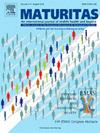Evaluation of muscle mass relative to weight/sitting height2 improves the association with physical performance
IF 3.9
2区 医学
Q2 GERIATRICS & GERONTOLOGY
引用次数: 0
Abstract
Objectives
To compare relationships of appendicular skeletal muscle mass (ASM) with the function of the upper and lower extremities, after the former has been adjusted by five body size variables: height2; weight; body mass index (BMI); sitting height2; and weight/sitting height2.
Study design
A cross-sectional study of data derived from the baseline phase of the Physical Activity and Health in Older Women Study.
Main outcome measures
ASM was measured by bioelectrical impedance analysis. Grip strength and the time spent on the 5-times chair stand test (5-CST) were the evaluation indexes of upper and lower extremity function respectively. Standardized grip strength and log-transformed 5-CST were used as dependent variables, and standardized ASM adjusted by the five body size variables were used as independent variables. Multiple linear regression models then assessed the relationships of muscle mass with grip strength and 5-CST.
Results
1103 community-dwelling women aged 60–70 years were included in this study. After adjustment for covariates, ASM adjusted by height2 or sitting height2 was positively associated with grip strength (β = 0.140, 0.164 respectively, all P values <0.001), and only ASM adjusted by sitting height2 was positively associated with the time spent on the 5-CST (β = 0.129, P < 0.001). Weight-adjusted ASM was associated only with the time spent on the 5-CST (β = −0.158, P < 0.001) and BMI-adjusted ASM was associated only with grip strength (β = 0.190, P < 0.001). ASM adjusted by weight/sitting height2 was positively associated with grip strength (β = 0.140, P < 0.001) and negatively associated with the time spent on the 5-CST (β = −0.076, P = 0.012).
Conclusions
Compared to ASM adjusted by the other four body size variables, ASM adjusted by weight/sitting height2 had better associations with upper and lower extremity function, which provides new perspectives for improving muscle mass and predicting adverse outcomes.
评估相对于体重/坐高的肌肉质量2可以改善与身体表现的联系。
目的:比较阑尾骨骼肌质量(ASM)与上肢和下肢功能之间的关系,其中前者经5个体型变量:身高2;重量;体重指数(BMI);坐在height2;体重/坐高。研究设计:对老年妇女体力活动与健康研究基线阶段的数据进行横断面研究。主要观察指标:采用生物电阻抗分析法测定ASM。握力和5次椅站试验(5-CST)时间分别为上肢和下肢功能的评价指标。以标准化握力和对数变换后的5-CST为因变量,以五个体型变量调整后的标准化ASM为自变量。然后用多元线性回归模型评估肌肉质量与握力和5-CST的关系。结果:1103名60-70岁社区居住女性纳入本研究。协变量调整后,高度2和坐姿高度2调节的ASM与握力呈正相关(β = 0.140, 0.164),所有P值2均与5-CST时间呈正相关(β = 0.129, P = 0.140, P)。与其他四个体型变量调节的ASM相比,体重/坐高调节的ASM与上肢和下肢功能的相关性更好,这为改善肌肉质量和预测不良后果提供了新的视角。
本文章由计算机程序翻译,如有差异,请以英文原文为准。
求助全文
约1分钟内获得全文
求助全文
来源期刊

Maturitas
医学-妇产科学
CiteScore
9.10
自引率
2.00%
发文量
142
审稿时长
40 days
期刊介绍:
Maturitas is an international multidisciplinary peer reviewed scientific journal of midlife health and beyond publishing original research, reviews, consensus statements and guidelines, and mini-reviews. The journal provides a forum for all aspects of postreproductive health in both genders ranging from basic science to health and social care.
Topic areas include:• Aging• Alternative and Complementary medicines• Arthritis and Bone Health• Cancer• Cardiovascular Health• Cognitive and Physical Functioning• Epidemiology, health and social care• Gynecology/ Reproductive Endocrinology• Nutrition/ Obesity Diabetes/ Metabolic Syndrome• Menopause, Ovarian Aging• Mental Health• Pharmacology• Sexuality• Quality of Life
 求助内容:
求助内容: 应助结果提醒方式:
应助结果提醒方式:


